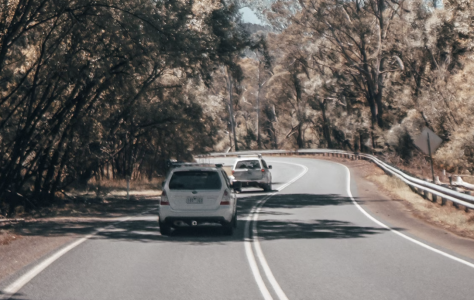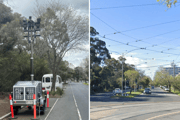Are you at risk of a $1,250 fine? Aussie drivers urged to rethink these road rules NOW
- Replies 16
If you’re a Queensland driver, you might want to double-check your seatbelt and put that phone away—because as of today, the cost of breaking road rules just got a whole lot steeper.
In a move that’s sure to have many motorists clutching their wallets, the Queensland government has hiked up fines for a range of traffic offences, with some penalties now topping a whopping $1,250.
But as the penalties rise, so too do the calls for a major rethink on how we keep our roads safe.
Why the sudden spike in fines?
From July 1, the standard penalty unit in Queensland has increased to $166.90, meaning fines for common offences have jumped by 3.5%.
This follows earlier reporting on the Queensland government’s ongoing fine hikes, where increases of up to 7.7% were recorded in past years and detection cameras saw unpaid fines skyrocket, a trend that continues into this financial year.
For example, if you’re caught speeding up to 10km/h over the limit, you’ll now be hit with a $333 fine, up $11 from last year. But the real sting is for those caught using their phone behind the wheel or not wearing their seatbelt correctly: that’ll set you back a staggering $1,250, an increase of $42.
Other offences have also seen a bump. Failing to give way to a pedestrian or disobeying a stop sign will now cost you $500, while those with a heavy foot—caught speeding more than 40km/h over the limit—face a jaw-dropping $1,918 fine.

Is it working? The experts weigh in
Despite these hefty penalties, Queensland’s road toll has reached a grim 15-year high, with 303 lives lost in 2024 alone. This has prompted the Royal Automobile Club of Queensland (RACQ) to call for a rethink. Dr Michael Kane, RACQ’s Head of Public Policy, says simply raising fines isn’t enough.
'Increasing fines over the past five years clearly hasn’t worked to improve road safety,' Dr Kane told Yahoo News Australia. 'The choice to deliberately break road rules and drive illegally is killing and seriously injuring too many people.'
Dr Kane argues that drivers need to feel there’s a real risk of being caught, not just a risk of being fined. 'The consequences must be significant, but so must the likelihood of enforcement,' he said.
Where does all the money go?
With the increase in fines, the Queensland government expects to rake in $850 million in the 2025-26 budget, up from $794 million the previous year.
While some of this revenue is earmarked for road safety initiatives, many drivers are left wondering if the focus is on safety or simply boosting the state’s coffers.
By law, the government can only raise fines by the default rate (currently 3.5%) unless the Treasurer approves a different increase. This system is designed to keep penalties in line with inflation and maintain their deterrent effect, but it also means fines will keep creeping up year after year.
What else can be done?
RACQ isn’t just calling for higher fines. They want smarter enforcement. Their recommendations include:
- More highly visible police patrols on the roads
- Increased use of point-to-point speed cameras in high-crash zones
- Expanding impoundment laws to target repeat offenders, including those caught speeding, drink driving, or drug driving
Dr Kane says the government needs to focus on deterrence, enforcement, and improving driver behaviour, not just on raising revenue.

Do you think higher fines will make our roads safer, or is it time for a new approach? Have you ever been caught out by a road rule you didn’t know about? Share your thoughts and experiences in the comments below!
In a move that’s sure to have many motorists clutching their wallets, the Queensland government has hiked up fines for a range of traffic offences, with some penalties now topping a whopping $1,250.
But as the penalties rise, so too do the calls for a major rethink on how we keep our roads safe.
Why the sudden spike in fines?
From July 1, the standard penalty unit in Queensland has increased to $166.90, meaning fines for common offences have jumped by 3.5%.
This follows earlier reporting on the Queensland government’s ongoing fine hikes, where increases of up to 7.7% were recorded in past years and detection cameras saw unpaid fines skyrocket, a trend that continues into this financial year.
For example, if you’re caught speeding up to 10km/h over the limit, you’ll now be hit with a $333 fine, up $11 from last year. But the real sting is for those caught using their phone behind the wheel or not wearing their seatbelt correctly: that’ll set you back a staggering $1,250, an increase of $42.
Other offences have also seen a bump. Failing to give way to a pedestrian or disobeying a stop sign will now cost you $500, while those with a heavy foot—caught speeding more than 40km/h over the limit—face a jaw-dropping $1,918 fine.

Queensland has increased road fines by 3.5% from 1 July, with penalties like $1,250 for phone use or incorrect seatbelt, and up to $1,918 for speeding more than 40km/h over the limit. Image source: Callum Eddings / Unsplash.
Is it working? The experts weigh in
Despite these hefty penalties, Queensland’s road toll has reached a grim 15-year high, with 303 lives lost in 2024 alone. This has prompted the Royal Automobile Club of Queensland (RACQ) to call for a rethink. Dr Michael Kane, RACQ’s Head of Public Policy, says simply raising fines isn’t enough.
'Increasing fines over the past five years clearly hasn’t worked to improve road safety,' Dr Kane told Yahoo News Australia. 'The choice to deliberately break road rules and drive illegally is killing and seriously injuring too many people.'
Dr Kane argues that drivers need to feel there’s a real risk of being caught, not just a risk of being fined. 'The consequences must be significant, but so must the likelihood of enforcement,' he said.
Where does all the money go?
With the increase in fines, the Queensland government expects to rake in $850 million in the 2025-26 budget, up from $794 million the previous year.
While some of this revenue is earmarked for road safety initiatives, many drivers are left wondering if the focus is on safety or simply boosting the state’s coffers.
By law, the government can only raise fines by the default rate (currently 3.5%) unless the Treasurer approves a different increase. This system is designed to keep penalties in line with inflation and maintain their deterrent effect, but it also means fines will keep creeping up year after year.
What else can be done?
RACQ isn’t just calling for higher fines. They want smarter enforcement. Their recommendations include:
- More highly visible police patrols on the roads
- Increased use of point-to-point speed cameras in high-crash zones
- Expanding impoundment laws to target repeat offenders, including those caught speeding, drink driving, or drug driving
Dr Kane says the government needs to focus on deterrence, enforcement, and improving driver behaviour, not just on raising revenue.
Key Takeaways
- Queensland has increased road fines by 3.5% from 1 July, with penalties like $1,250 for phone use or incorrect seatbelt, and up to $1,918 for speeding more than 40km/h over the limit.
- RACQ argues that raising fines hasn't improved road safety and is urging the State Government to rethink how motorists are held accountable.
- Dr Michael Kane from RACQ is calling for more visible police on roads, additional speed cameras in high-crash areas, and expanded impoundment laws for serious offences.
- The increase in fines is expected to generate $850 million in state revenue for 2025-26, as Queensland faces its highest road toll in 15 years with 303 deaths in 2024.
Do you think higher fines will make our roads safer, or is it time for a new approach? Have you ever been caught out by a road rule you didn’t know about? Share your thoughts and experiences in the comments below!







